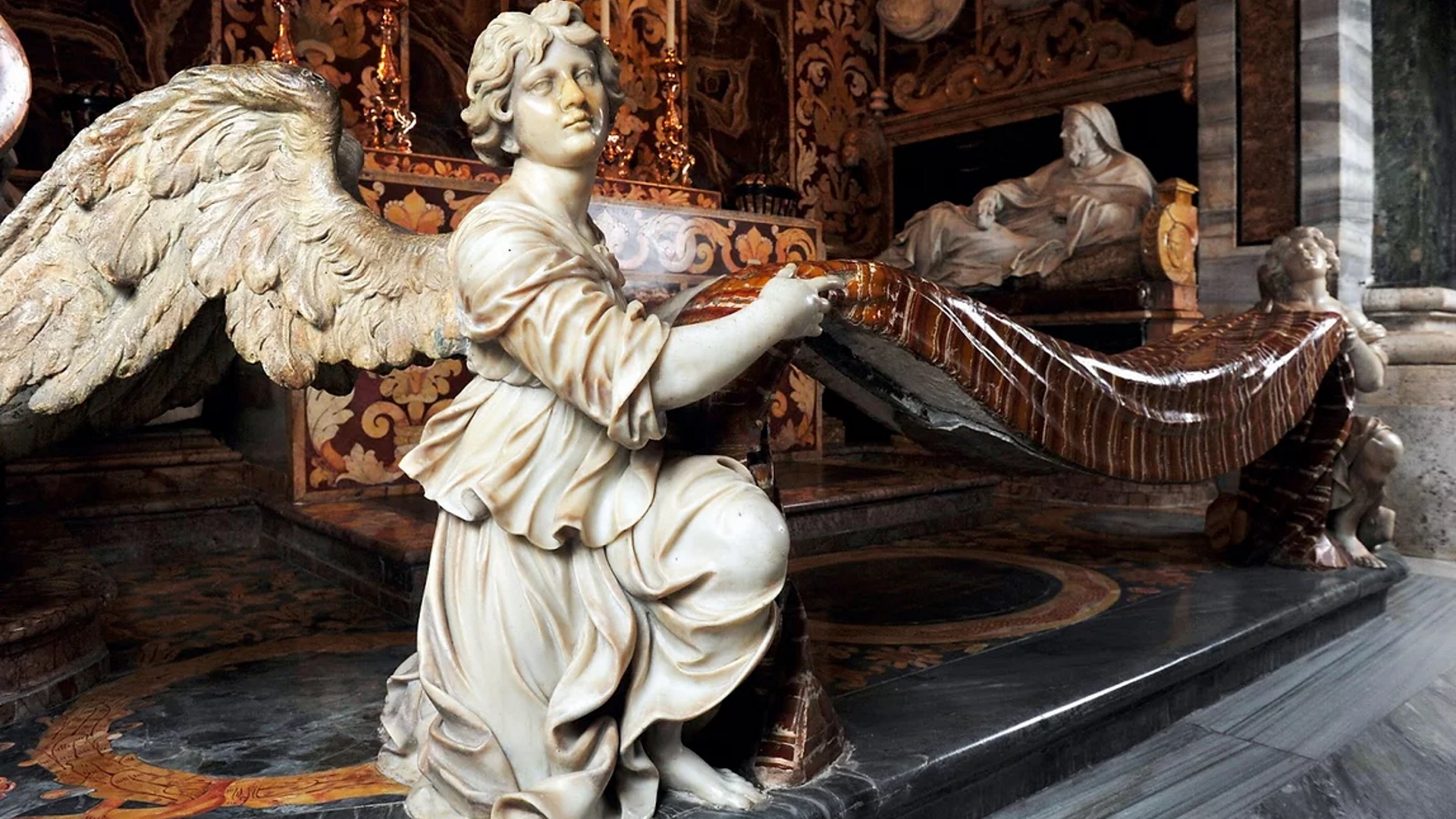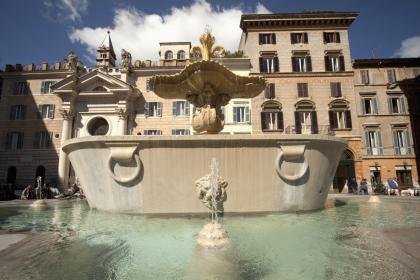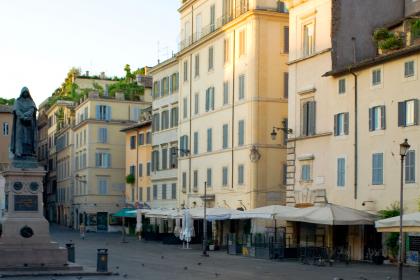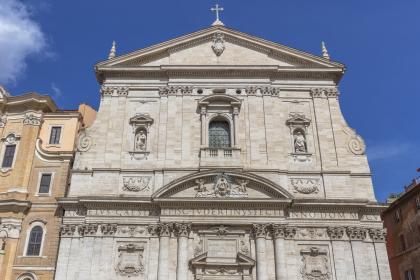
A journey through history, art and spirituality following in the footsteps of two giants of Christianity. We are in the heart of Rione Regola, just a few steps from Piazza Farnese and Campo de’ Fiori, but to discover the origins of this church we have to go back as far as the 4th century. By tradition, it all began in 382, when Pope Damasus entrusted St. Jerome, father and doctor of the Church, with the translation, interpretation and commentary of the Bible. And in Rome, having become the pontiff’s secretary, Jerome lived in the house of the Roman matron Paula, which was later transformed into a small church named after him.
Since the 16th century, however, the history (and name) of the church has been linked to that of the Confraternita della Carità (Confraternity of Charity), founded by Giulio dei Medici, the future Pope Clement VII, who gave the entire religious complex to the sodality in 1524. The Confraternity became famous for its charitable works, for example caring for the sick and prisoners. Their activities, however, received a further decisive impetus, when a young, newly ordained Florentine priest moved into the convent adjoining the church, becoming one of the main architects of the religious revival of 16th-century Rome. Starting from 1551, St. Philip Neri lived here for more than thirty years, initiating in his rooms (which can still be visited today) those meetings of meditation, spiritual dialogue and prayer that would take the name of “oratory” and constitute the origin of the Congregation of the Oratorians.
Gutted by fire in 1631, the church was rebuilt in the following years: its elegant Baroque façade is the work of Carlo Rainaldi, the architect also responsible for the church of Santa Maria in Portico in Campitelli and the façade of Sant’Andrea della Valle. The interior has a single nave, covered by a rich carved wooden ceiling. There are many works of art worthy of mention, for example the high altar designed by Carlo Rainaldi: the enormous altarpiece is a copy of a painting showing The Last Communion of St Jerome by Domenichino, now in the Vatican Pinacoteca. The marble statue of St. Philip Neri by Pierre Legros adorns, on the left, the Antamoro Chapel, the only Roman work by Filippo Juvarra who, even in the small space available, succeeded here in achieving a majestic effect.
Finally, utterly spectacular is the Baroque Spada Chapel: built in 1654 by Virgilio Spada perhaps in collaboration with Francesco Borromini, it is decorated with a rich covering of jasper and precious marbles, simulating a funeral apparatus, with ovals with busts of ancestors and a bronze garland framing a precious 15th-century painting. In place of a simple balustrade, two marvelous white marble angels holding a cloth carved in striped red jasper are at the entrance of the chapel and seem to block access to the chapel. However, the wings of the angel on the right are made of wood and can be swung out of the way.
Rione VII - Regola

Campo de’ Fiori

 Condividi
Condividi
The Church of Santa Maria in Vallicella (Chiesa Nuova) and the rooms of San Filippo Neri

 Condividi
Condividi
Information
For the timetable of the masses and visiting conditions, please consult the contacts.
 Condividi
Condividi
Location
To find out about all accessibility services, visit the Rome accessible section.











































